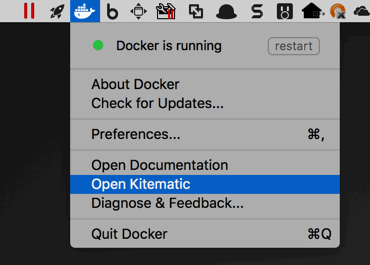Get Sqlcmd For Mac
Copy the scripts you generated above to your Mac where you can easily get to them from the Terminal. Open a Terminal, and change to the folder where you placed the scripts. Now, connect to your SQL Server running in Docker using sql-cli, and make sure you are on master. Intel 915gm/gms 910gml drivers. If you will try ConvertTo-Json results of Invoke-SqlCmd as is you will get bunch of unwanted data like ItemArray, Table etc. To reduce it we are using: Select-Object * -ExcludeProperty ItemArray, Table, RowError, RowState, HasErrors.

In this section, you will get SQL Server 2017 running on Docker. After that you will install the necessary dependencies to create PHP apps with SQL Server Step 1.1 Install SQL Server • In order to run SQL Server on your Mac, we are going to use the.
For this, you need to. • Configure at least 4GB of memory for your Docker environment, also consider adding multiple cores if you want to evaluate performance.
 You can do this in the option on the menu bar. Mac os on pc. • Next, start a new Terminal prompt and use the following commands to download and start the SQL Server on Linux Docker image. Make sure to use a strong password with special characters.
You can do this in the option on the menu bar. Mac os on pc. • Next, start a new Terminal prompt and use the following commands to download and start the SQL Server on Linux Docker image. Make sure to use a strong password with special characters.
SQL Server has traditionally run only on Windows. New for 2017 is the ability to install server instances and work with databases on Linux and in Docker containers, which opens the possibility of running SQL Server on macOS. With the extension tools now available as native Linux and macOS applications, users can capitalize on the variety of options available for running a database instance. This course shows how to install SQL Server on new platforms, and how to connect to it from a newly diverse array of environments.
Instructor Adam Wilbert also shows how to use SQL Operations Studio to perform routine SQL Server maintenance tasks, such as backups, from Windows, macOS, and Linux. Instructor •. Database and data visualization expert Adam Wilbert helps clients get better insights from their data. As a consultant and trainer, Adam has spent over 5 years helping government, enterprise, and nonprofit clients use Access and Excel efficiently. Adam has developed Access databases for National Park Service managers and U.S. Geological Survey scientists, in addition to leading Access and Excel workshops throughout the United States through a partnership with Northwest Environmental Training Center. His in-depth multi-day training events benefit private firms such as Boeing and Verizon, NGOs, and government employees in agencies such as the Environmental Protection Agency, Bureau of Land Management, and the Army Corps of Engineers.
As the founder of CartoGaia, a cartography firm, Adam produces publication quality mapping products to explore awareness in the spatial arrangement of data in order to help guide policy and decision makers in a wide variety of environmental and business applications. He was chosen as a featured contributor to the inaugural edition of the North American Cartographic Information Society's Atlas of Design. You can connect with Adam on Twitter or at. By: Kevin Skoglund course • 6h 35m 25s • 19,601 viewers • Course Transcript - [Narrator] The SQL command tool was installed in to the /opt/mssql-tools/bin/ directory on my computer.
Notice though that even if I'm in that folder and I've typed sqlcmd to run it I get the message that it can't be found. I could type in the full path to the tool for instance /opt/mssql-tools/bin/sqlcmd and that time when I run it you'll notice that I get this text here.
If I scroll back up we'll see that this is the help document for SQL command. In order to simplify its use it'll be helpful to add this directory location to something called the path variables on my machine. This will allow us to simply type in sqlcmd from any location on the computer and Linux will know where to go to find the tool. To do this I'll scroll back down a little bit and we'll type in echo, a single quotation mark, export PATH equals a double quotation mark and a dollar sign, then PATH again, colon, then the file path /opt/mssql-tools/bin followed by a closing double quote and a closing single quote •. Watch this course anytime, anywhere. Course Contents • Introduction Introduction • • • 1.